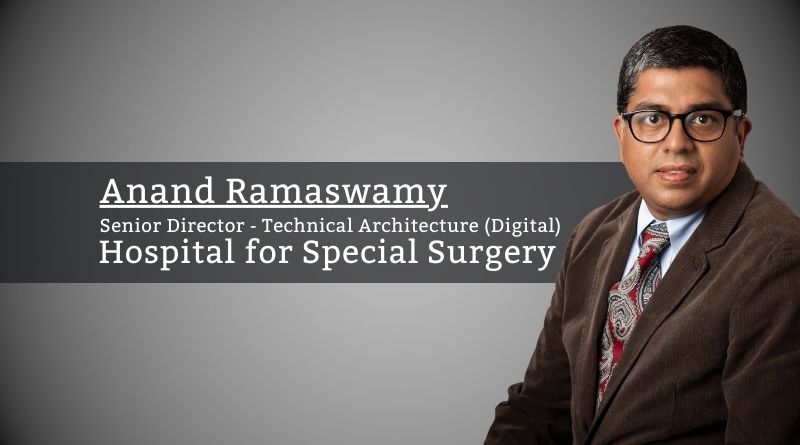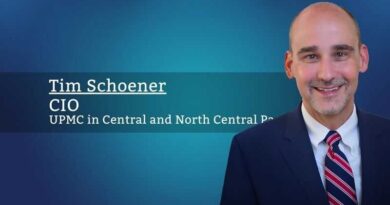Digital transformation through enterprise decision management with design thinking
By Anand Ramaswamy, Senior Director – Technical Architecture (Digital), Hospital for Special Surgery
While scheduling a flu shot appointment, I encountered a workflow issue highlighting several drawbacks and drop-offs. After receiving a text notification regarding my appointment, I found no options to confirm or reschedule the appointment. This lack of interactive features in the notification text made it inconvenient for recipients like me to take immediate action. Drawbacks include the potential for missed appointments due to oversight or a need for a user-friendly confirmation mechanism. Additionally, the absence of an option to reschedule in the same text message could lead to inefficiencies, as recipients may need to initiate a separate communication to adjust their appointment, resulting in a less streamlined and user-friendly experience. Such workflow limitations emphasize optimizing communication systems to enhance user engagement and appointment management.
This gap underscores the need for an integrated Enterprise Decision Management (EDM) system that seamlessly manages appointment scheduling, notifications, and user interactions. A well-implemented EDM system could automate these interactions, sending messages with options to confirm, reschedule, or even provide additional information about the appointment, enhancing user engagement and satisfaction.
Digital transformation with EDM involves leveraging technology and data to revolutionize decision-making processes within an organization
Furthermore, this experience points to a digital transformation gap in healthcare communication. A robust digital transformation strategy should encompass scheduling and incorporate user-friendly, interactive features within notifications to streamline the entire process. It emphasizes the need for organizations to digitize their operations and optimize these digital processes for user convenience and efficiency.
Without the support of an EDM system, hospitals face several challenges. Let’s take an example in their patient discharge processes:
- These processes are often manual, involving a multitude of tasks like managing medication instructions, scheduling follow-up appointments, and providing home care instructions. This manual approach can lead to delays and introduce the potential for errors.
- The absence of a centralized system creates communication gaps among healthcare professionals, including doctors, nurses, and pharmacists, involved in the patient’s care, resulting in inconsistent instructions and confusion for patients.
- Patient information is frequently scattered across various systems, making it challenging to access and share critical data necessary for informed decision-making during the discharge process.
- Post-discharge patients may find it challenging to adhere to their post-treatment care plans due to the absence of reminders or clear instructions, potentially resulting in readmissions and compromised patient outcomes.
These challenges underscore the importance of implementing EDM solutions to streamline and improve patient discharge processes.
Digital transformation with EDM involves leveraging technology and data to revolutionize decision-making processes within an organization. By integrating EDM principles into various aspects of an organization’s operations, from customer interactions to internal workflows, businesses can streamline decision-making, enhance efficiency, and improve outcomes. EDM facilitates the automation of routine decisions, incorporates data-driven insights, and ensures compliance with established rules and regulations. This transformation empowers organizations to adapt quickly to changing market conditions, achieve cost savings, reduce risks, and provide better customer and employee experiences. Ultimately, EDM-driven digital transformation enables organizations to thrive in today’s rapidly evolving business landscape.
| Enterprise Decision Management (EDM) is all about a systematic approach to managing and automating decisions within an organization to improve overall operational efficiency, consistency, and effectiveness. |
An exemplary illustration of the transformative power of EDM in a digital context is evident in the overhaul of the patient discharge process within healthcare. Implementing an EDM system enables the creation of a centralized repository for critical patient discharge decisions, encompassing vital aspects such as medication instructions, follow-up plans, and home care recommendations. This transformative approach automates the discharge workflow, utilizing predefined criteria to trigger a cascade of automated tasks, including instruction generation, follow-up appointment scheduling, and caregiver notifications, streamlining the process significantly. Furthermore, the EDM system harmoniously integrates diverse patient data sources, providing a comprehensive view of their medical history, medications, allergies, and more, facilitating well-informed decision-making. The system’s capacity to craft personalized care plans tailored to each patient’s unique needs, encompassing instructions, medication schedules, and follow-up reminders, engenders heightened patient engagement and adherence to post-discharge care, ultimately fostering better health outcomes. Moreover, EDM’s analytics capabilities empower healthcare providers to collect and analyze data on patient outcomes, readmission rates, and care plan adherence, identifying trends and opportunities for continual process optimization, thereby elevating patient outcomes over time.
Lastly, by facilitating enhanced communication among healthcare professionals involved in a patient’s care through real-time updates, alerts, and notifications, the EDM system ensures seamless coordination and collaboration, ultimately improving the overall quality of patient care.
Incorporating design thinking principles into EDM
Incorporating design thinking principles into EDM is a strategic approach to creating more user-centered, efficient, and innovative decision-making processes. Design thinking involves understanding user needs, ideating creative solutions, prototyping, testing, and iterative refinement. The ultimate goal is to enhance the decision-making experience and outcomes while fostering a culture of continuous improvement.
By applying design thinking in implementing an EDM system for patient discharge and follow-up, the hospital can achieve a digital transformation that improves patient care, reduces readmission rates, enhances communication, and optimizes the entire process. The system’s data-driven insights enable continuous improvement, improving patient outcomes and operational efficiency.



